by Frank | May 5, 2016 | graphic design, illustration, interpretation
Interpretation is the name given for the content produced by museums, galleries and so forth which helps to explain what they have on display and why.
I’m currently working on an interpretation tender submission for a wonderful project which will involve creating a map-based family trail for a national heritage site.
I love educational interpretation!
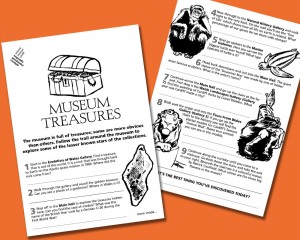 I’ve created a lot of interpretation-based work, especially for children and families, and my work is used to help engage with, inform and inspire younger people. I have a deep love for this educational work – nothing makes me happier than provoking curiosity and excitement in others, especially children, and encouraging them to learn, find out more, imagine. I am happiest when learning and it is a joy to have a job that encourages others to feel the same!
I’ve created a lot of interpretation-based work, especially for children and families, and my work is used to help engage with, inform and inspire younger people. I have a deep love for this educational work – nothing makes me happier than provoking curiosity and excitement in others, especially children, and encouraging them to learn, find out more, imagine. I am happiest when learning and it is a joy to have a job that encourages others to feel the same!
So anyway, as part of this tender submission I thought I’d ask one of my most important clients, Grace Todd who is Senior Learning, Participation and Interpretation Officer at National Museum Cardiff, whether she’d be able to write me a sentence or two as a recommendation for this tender.
I was blown away by what she wrote. Here it is in full:
“Frank has been contributing to the work of the Learning, Participation and Interpretation department at the National Museum Wales for several years on a range of projects. Frank is professional, efficient, and has an ability to understand and design what we require. Frank listens, and understands that our remit is engagement and thus their illustrations have to be engaging, they have to hook the reader in.
One of the most demanding projects that Frank worked on was developing illustrations for a children’s story book that we published about a dinosaur. Having written the story I had strong ideas about how the characters should look on the page. The story was an intrinsic part of one of our school’s workshops for 4-7 year olds, and as such needed to encourage engagement, and a sense of exploration and discovery for the pupils. Frank’s illustrations encourage children to go back to different pictures and to discover new things. They help children read characters’ emotions and interactions.
Recently Frank’s designed and illustrated learning and activity resources for a new high profile exhibition on archaeology. In keeping with the brief these were designed to increase the enjoyment and engagement of young visitors and their families. Frank’s playful, lively hand-inked drawings have really encouraged children to be creative, imaginative and spontaneous. They’ve also helped make big themes and topics conveyed in the exhibition accessible and easy to relate to for our younger visitors. Parents, teachers, and children have all embraced these resources, the feedback has been tremendously positive. The illustrations have encouraged visitors to look more closely at what’s being shown, prompted observation, discussion, curiosity and speculation. One of the archaeology curators said she’d never seen archaeology conveyed in such a fun way!
Frank has also contributed to a lot of ‘one off’ projects for the department over the years. Our audience is varied: families, school groups across the ages, adults, toddlers, teenagers. In each instance Frank has demonstrated sound understanding of the audience and how to engage with them. We’re always asking Frank’s illustrations to work hard, they have to engage visitors, convey ‘big stories’, encourage imaginative, exploration and creativity, and help make the museum experience fun. Frank has demonstrated an ability to do this on every project.”
by Frank | Nov 23, 2015 | graphic design, illustration
In the spring I created a poster for a groundbreaking couple of events – the first gigs to take place in an actual art gallery in National Museum Cardiff. In October the Museum reprised the events and I updated the poster with new colours.
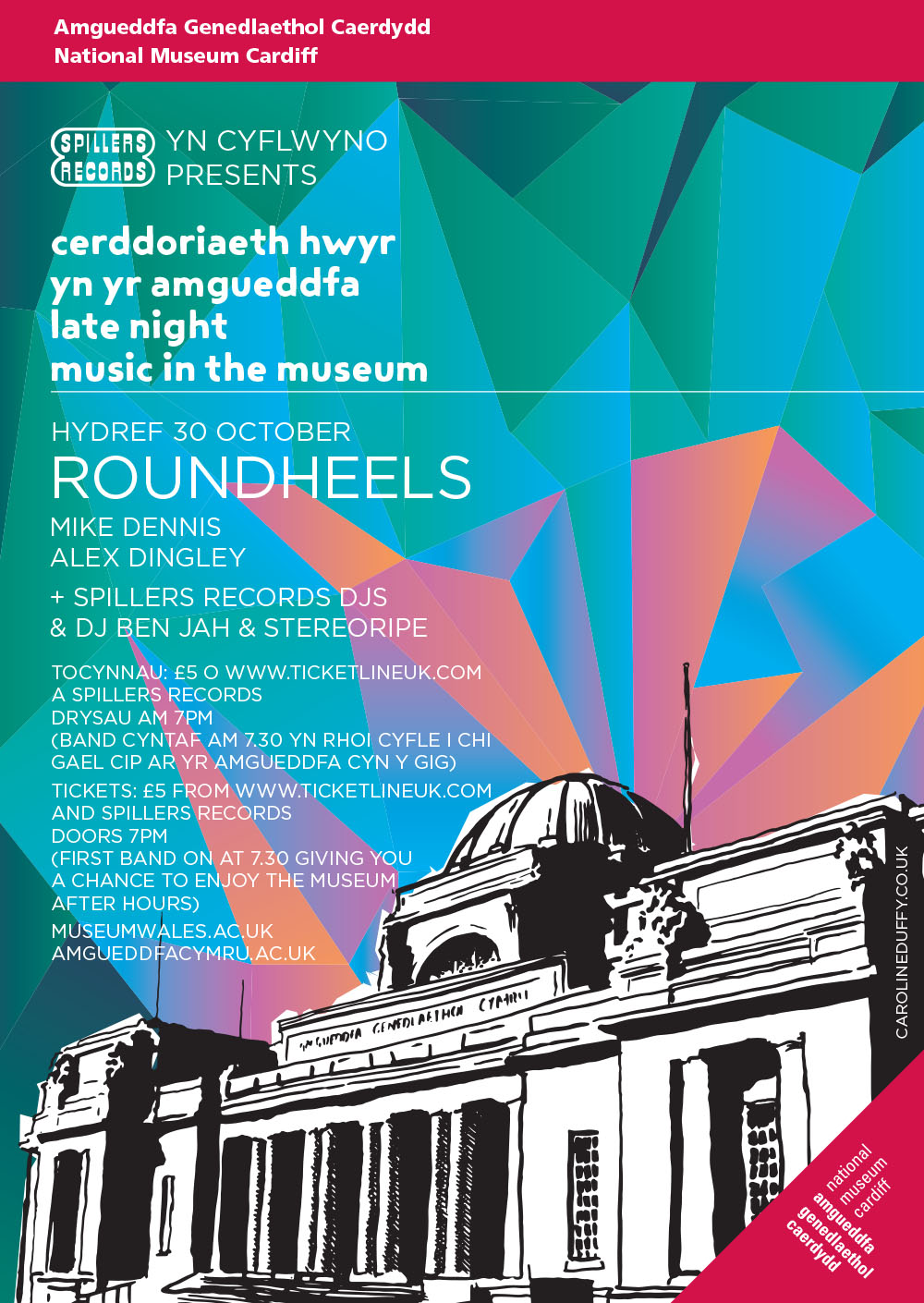
by Frank | Nov 19, 2015 | graphic design, illustration, interpretation
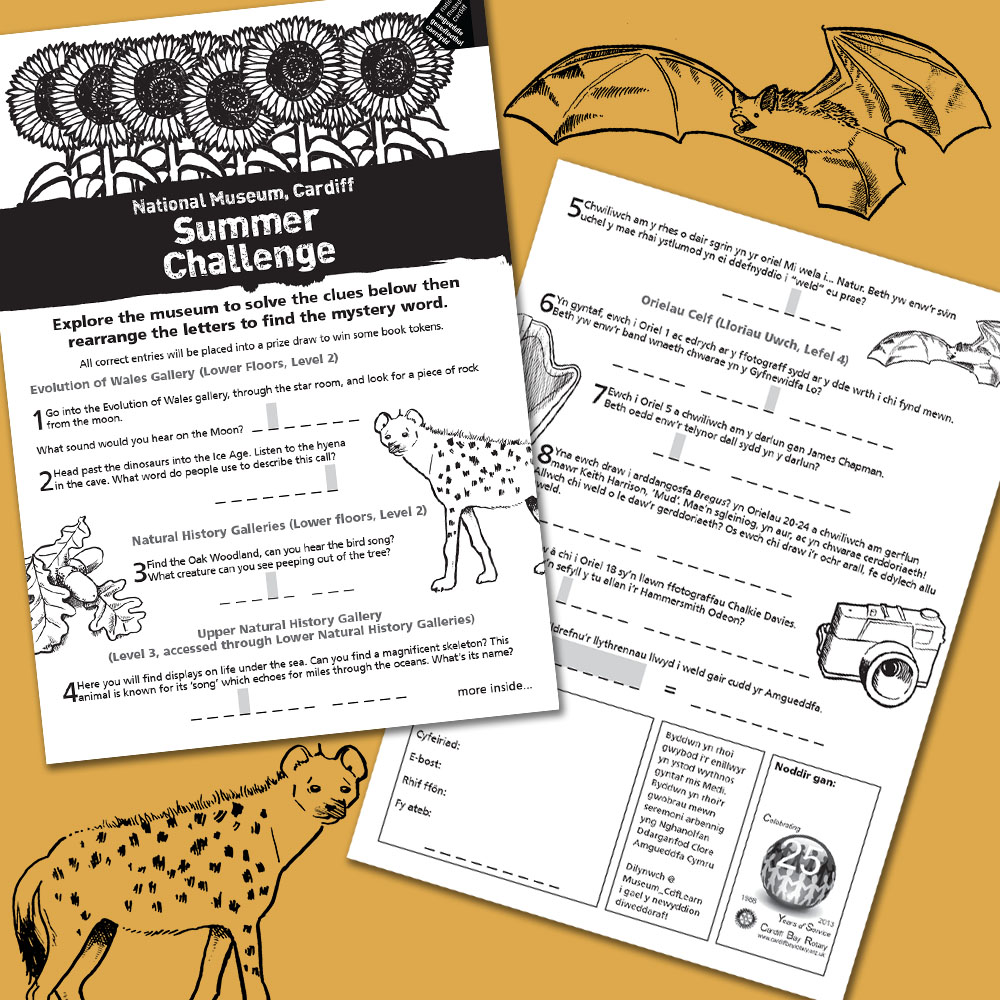 For the last few summers the Learning Department at National Museum Cardiff has run a Summer Challenge for children, the prize being some book tokens, and they’ve asked me to design and illustrate it. It’s just a simple black and white affair – 4 page A4 with Welsh one side and English the other. This year’s illustrations included a bat, a hyena and a harp!
For the last few summers the Learning Department at National Museum Cardiff has run a Summer Challenge for children, the prize being some book tokens, and they’ve asked me to design and illustrate it. It’s just a simple black and white affair – 4 page A4 with Welsh one side and English the other. This year’s illustrations included a bat, a hyena and a harp!
by Frank | Jul 2, 2015 | graphic design, illustration, interpretation
Big Pit National Coal Museum commissioned me to do the design & illustration of a trail booklet that families could follow as they made their way around the site. It’s now gone to press – I can’t wait to see it in the flesh!
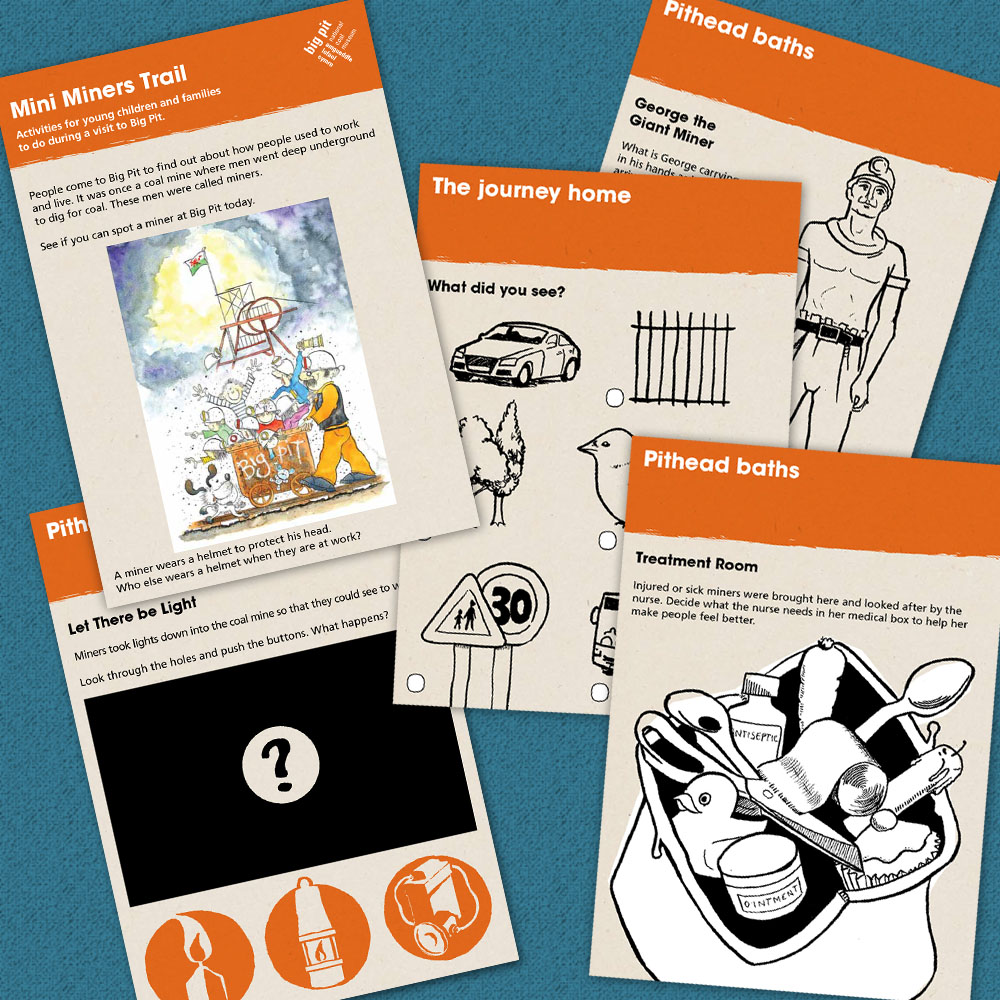
by Frank | Jun 22, 2015 | branding, graphic design, thoughts
Okay, so I wrote a whole 24-page thingumy about how to write graphic design briefs and you can download it here (all you have to do is subscribe to my monthly-ish newsletter in return) but what this post specifically addresses is ways to communicate your style likes and dislikes with a designer.
Design briefs in brief
A design brief is a document you create in order to tell your chosen designer(s) the specifics of what you need from them, how you need it, your target audience, your budget, etc etc.
The part of this I’ve really seen clients struggle with is the bit where you try and communicate the kind of style that you’d like them to use. Of course, by describing your target audience well, your designer will already have some styles in mind and could suggest a few. If you’d like to cut some time out of the conceptual part of the design (and therefore potentially save yourself some money), the more specific you are about what you’re looking for the easier it’ll be for everyone.
I know what I want
Andrew Norton of Naturally Kind Foods was clear about wanting his t-shirt illustration created in the style of Sailor Jerry / Ed Hardy tattoos, and so that’s what I gave him…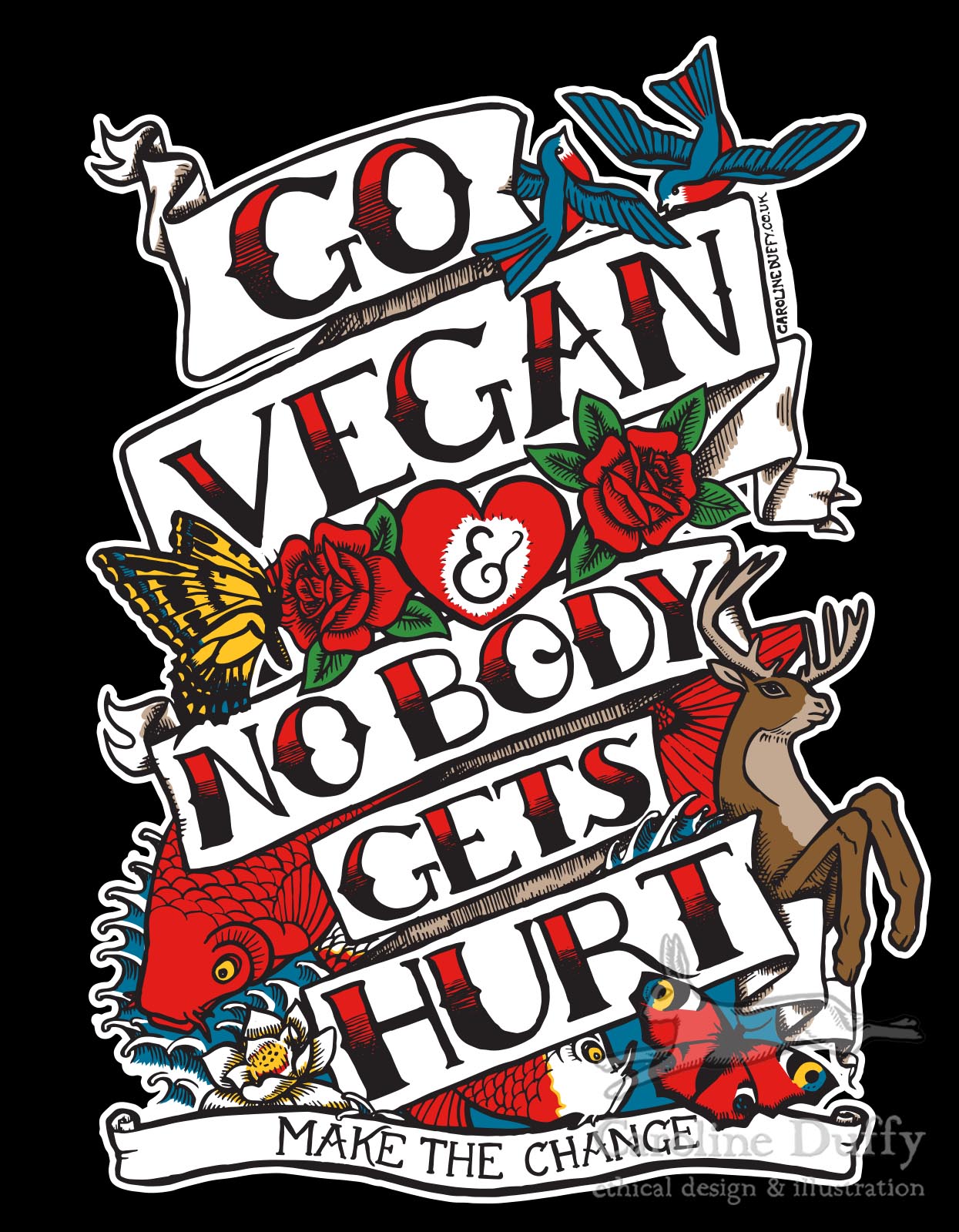
I don’t have the words for what I want
But you might not be so clear about what you want, and you and your designer might not share the same vocabulary to describe a particular look. The word “vintage” might mean one thing to me and another to you.
So here are a few ideas you might consider in order to get your message across:
- pinterest boards – objects, adverts (particularly of a chosen era – 1950s, 1980s etc), drawings, logos, typefaces. These are invaluable.
- colour swatch ideas like designseeds
- magazines also aimed at your target audience. Even if the magazine isn’t designed quite the way you’d want, flick through and have a look at the adverts
- choose an actual object that sums up your business to you and show it to the designer. In the flesh. Is it a enamelled galvanised steel gardening bucket? A greasy spanner? You’d be surprised how effective this is.
- a mood board – cut out clippings of this and that. This can be more useful than pinterest as you can have it next to your desk and gaze at it and have Wonderful Moments of Inspiration
But also
Sometimes it is best to consider alternatives to what you have in your head – designers have been thinking visually a long time and will often have some great ideas about how to give you what you want. I recently read that a good percentage of design agencies who’d won tenders had ignored the brief in some way – often by pushing ideas further than the client had ever imagined they create something spectacular. So do be ready to keep an open mind!
I’d be interested in hearing how others have showed their preferences within or alongside a design brief – the weirder the better!
by Frank | May 27, 2015 | graphic design
Four jobs you might not have considered asking a graphic designer to do
As surely as most people get their cars serviced by mechanics and their teeth filled by dentists, probably the first kind of person you’d consider asking to create you a logo or a magazine would be a graphic designer.
However, there are other little jobs we can perform – jobs that make your life easier and your work more impressive, winning you acclaim from colleagues, clients and bosses alike, probably ensuring rapid promotion, pay rises, ability to fly and/or become invisible and maybe even respect from your cat.
These jobs, then:
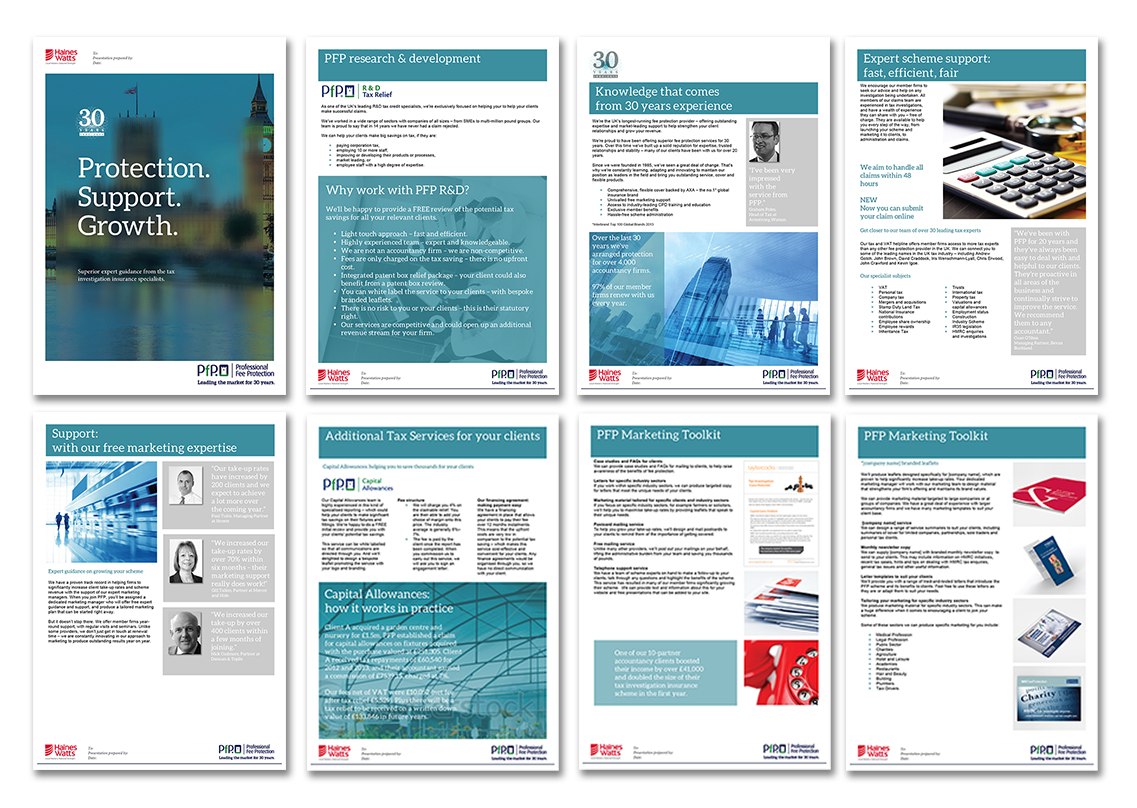 1) Word templates
1) Word templates
Your company sells products to other companies and you go into prospective clients and you give them a whole spiel about how your service or product will help them, with figures like the percentages it’s increased profits or reduced waste or gained the respect of cats of other clients. You want to show the clients something snazzily designed with all these facts and figures on it, something to leave with them, with their logo on it and perhaps some of the info changed to suit their industry sector. But if a snazzy designer creates some snazzy template for you to amend yourself they will use strange esoteric expensive software, right, and you don’t have the money to buy that or the time to learn how to use it.
Wrong. I’ve created just such a thing in that bog-standard ol’ carthorse Word for an insurance company. Their prospective clients’ logo is in the footer of a master page so just one change needed for a global result. And of course it’s incredibly easy to change the text here and there and there’s plenty of on-line how-to support.
2) Powerpoint slides

Powerpoint cover slide designed for CIO Connect conference
We all love Powerpoint, don’t we?
We especially love the default template designs, fonts and colours that almost every presentation ever has used.
The easiest, cheapest thing (and most common request) is that I create a slide background for a presentation. I create this in Photoshop, place it in the background of a master slide and voila! a beautifully-branded display. Further to this I can advise on typefaces and colour, create a template for you or I can design the whole presentation entirely – it’s really up to you, your budget, the time you have and your own confidence with the software.
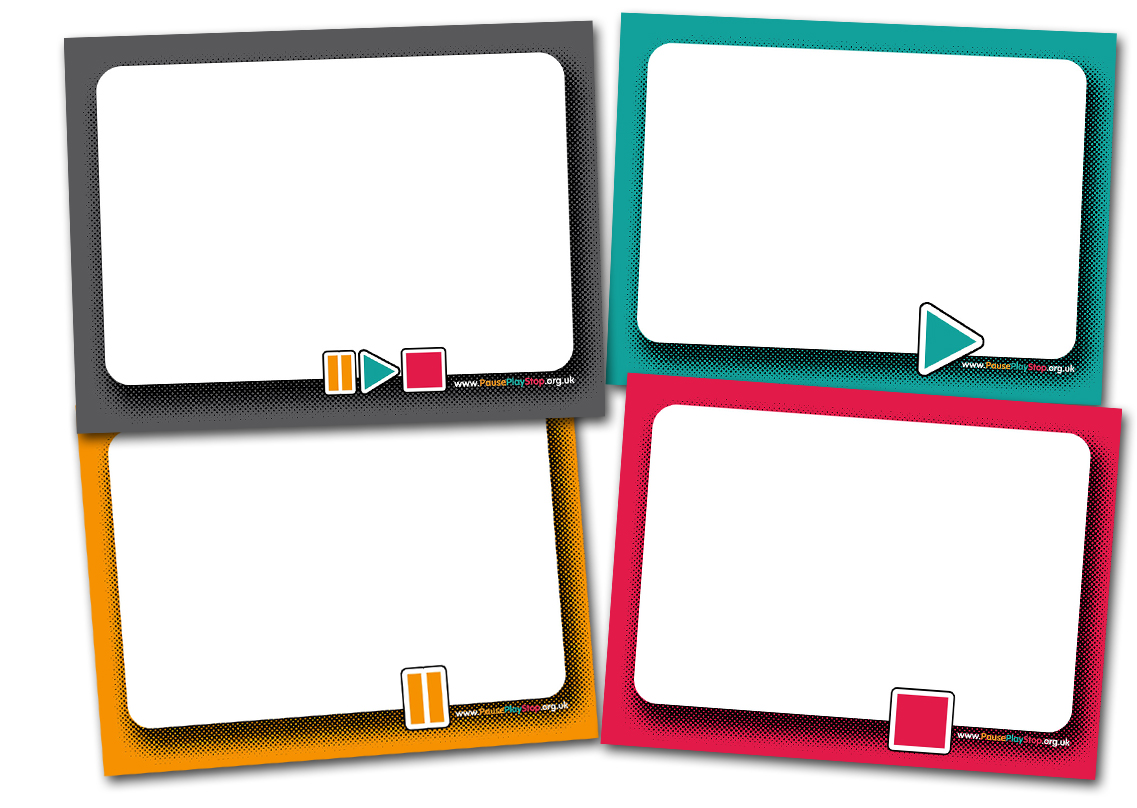
Slides for sexual consent campaign PausePlayStop
3) Beautiful graphs and charts

People with £££ just love to get a designer all over their facts and figures to make a mouthwatering infographic. But for only £, you can get your default Excel-created pie-charts made beautiful, elegant and suited to your branding.
4) Headers for e-newsletters, facebook pages, twitter etc

Header designed for the newsletter of the Diversity Trust
These are the sorts of things that have people inventing interesting and demonstrative new swearwords. You might know exactly what you want, but, lacking Photoshop, illustrator and the skills to use said, you end up forswearing all technology and decide to move to a shack deep in the nearest and most convenient dark forest.
It’s okay. I can help!
Other random little jobs I’ve been asked to do:
- Colour-match products that were photographed at different times so they look the same
- photoshop-out a dastardly coldsore
- consult on the most suitable freely-available font for a shop where the owner was going to create most of the signage herself
- make the sky blue (in photoshop, not real life – my witchcraft skills are not yet that advanced)
 I’ve created a lot of interpretation-based work, especially for children and families, and my work is used to help engage with, inform and inspire younger people. I have a deep love for this educational work – nothing makes me happier than provoking curiosity and excitement in others, especially children, and encouraging them to learn, find out more, imagine. I am happiest when learning and it is a joy to have a job that encourages others to feel the same!
I’ve created a lot of interpretation-based work, especially for children and families, and my work is used to help engage with, inform and inspire younger people. I have a deep love for this educational work – nothing makes me happier than provoking curiosity and excitement in others, especially children, and encouraging them to learn, find out more, imagine. I am happiest when learning and it is a joy to have a job that encourages others to feel the same!








